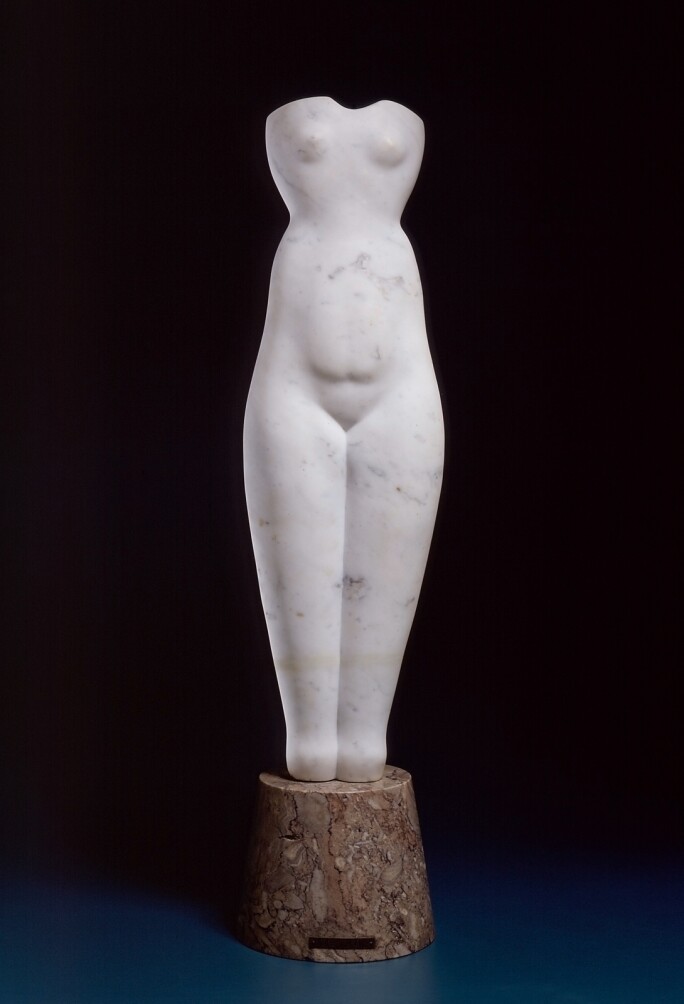“The esteem in which Archipenko was held as sculptor, first in Germany and later in the United States, reinforces his position as a unique modernist phenomenon in the history of sculpture in the first third of the twentieth century”

A lexander Archipenko was educated at the École des Beaux-Arts in Paris for a short time before abandoning formal studies altogether to join the radical circles of the avant-garde. Inspired in part by Picasso and Braque’s Cubist collages and trips to the Louvre, where he was enchanted by Egyptian, Assyrian, archaic Greek, and Gothic sculpture, Archipenko is best known for his exploration of the interplay between solids and voids, devising a sculptural equivalent to two-dimensional Cubism. Conceived in 1914, Flat Torso prefigures the return to classicism that pervaded Europe in the aftermath of the First World War. Eschewing the hard contours and elaborate convex-concave elements of high Cubism, with its smooth and supple curves, the present work exemplifies the reductionist impulse that would reappear in Archipenko’s practice over the next several years.
Drawing on early inspiration from his adolescent days at the Louvre, Archipenko imparts a Gothic sensibility to the lithe female form in Flat Torso. “The Gothic elongation and distortion emanate from religious ideas, ecstasy, and gravitation toward highly soaring divine power,” he wrote. “The Egyptian, Gothic and modern styles, by leaning toward creative abstract qualities, prove that they are subordinated to the same dynamism of nature with its perpetual transforming power which they set out to express” (Archipenko: Fifty Creative Years, New York, 1960, p. 40).
